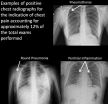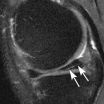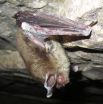(Press-News.org) CHICAGO - Researchers reported today on a procedure that can preserve fertility and potentially save the lives of women with a serious pregnancy complication called placenta accreta. Results of the new study presented at the annual meeting of the Radiological Society of North America (RSNA) showed that placement of balloons in the main artery of the mother's pelvis prior to a Caesarean section protects against hemorrhage and is safe for both mother and baby.
Placenta accreta, a condition in which the placenta abnormally implants in the uterus, can lead to additional complications, including massive obstetric hemorrhage at delivery. Surgical removal of the uterus, called hysterectomy, is commonly required to control such bleeding.
"Massive obstetric hemorrhage is the number one cause of maternal mortality worldwide and abnormal placental implantation is a major risk factor for this," said Patrick Nicholson, M.B., B.Ch., an interventional radiologist trainee at Cork University Hospital in Cork, Ireland.
At Dr. Nicholson's hospital, patients with abnormal placental implantation are treated by a multidisciplinary team that plans both an elective Caesarean (C-)section and prophylactic internal iliac balloon placement under fluoroscopic guidance. Immediately prior to the patient's C-section, an interventional radiologist uses specialized techniques to insert balloons into the two internal iliac arteries in the pelvis that supply the uterus with blood flow.
"Following the delivery of the baby, these balloons can be inflated to slow blood flow to the uterus, which allows the obstetrician time to gain control of the hemorrhage," Dr. Nicholson said.
For his study, Dr. Nicholson retrospectively reviewed the charts of all patients with abnormal placental implantation who received prophylactic internal iliac balloon placement since 2009. Over a 44-month period, the hospital treated 21 patients (mean age 35) who underwent balloon placement immediately followed by C-section.
In 13 of the 21 deliveries, the arterial balloons were inflated and when no longer needed, deflated and removed from the patient. The interventional radiology procedure was a technical success in 100 percent of the cases. However, despite use of the balloons, two of the patients required a hysterectomy.
"Without the balloons, many more of the patients would likely have required a hysterectomy," Dr. Nicholson said.
There were no maternal or fetal complications resulting from the interventional procedure.
"We are the first group to report on the fetal outcomes associated with prophylactic internal iliac artery balloon placement," Dr. Nicholson said. "There were no adverse outcomes for the babies as a result of this procedure."
According to Dr. Nicholson, the incidence of abnormal placental implantation has been increasing steadily over recent years.
"The risks for placenta accreta and its variations increase with a woman's age, previous C-sections and in vitro fertilization, all of which we expect to see more of in the coming decades," he said. "There's clearly a need for more research in this field."
Dr. Nicholson said results of the study add to a growing body of evidence that high-risk placental implantation pregnancies are best managed in a multidisciplinary setting.
"This research highlights the value of interventional radiology in managing this very serious, high-risk condition to control bleeding and maternal and fetal complications," Dr. Nicholson said.
INFORMATION:
Co-authors on the study are Karl James, M.B., B.Ch., MRCS, Jennifer Murphy, M.B., B.Ch., MRCPI, John G. Buckley, M.D., Liam D. Spence, M.B., B.Ch., and David J. Tuite, M.B., B.Ch.
Note: Copies of RSNA 2014 news releases and electronic images will be available online at RSNA.org/press14 beginning Monday, Dec. 1.
RSNA is an association of more than 54,000 radiologists, radiation oncologists, medical physicists and related scientists, promoting excellence in patient care and health care delivery through education, research and technologic innovation. The Society is based in Oak Brook, Ill. (RSNA.org)
For patient-friendly information on interventional radiology, visit RadiologyInfo.org.
CHICAGO - Researchers at Mayo Clinic found that some children are receiving chest X-rays that may be unnecessary and offer no clinical benefit to the patient, according to a study presented today at the annual meeting of the Radiological Society of North America (RSNA).
"Chest X-rays can be a valuable exam when ordered for the correct indications," said Ann Packard, M.D., radiologist at the Mayo Clinic in Rochester, Minn. "However, there are several indications where pediatric chest X-rays offer no benefit and likely should not be performed to decrease radiation dose ...
CHICAGO - A popular surgery to repair meniscal tears may increase the risk of osteoarthritis and cartilage loss in some patients, according to research presented today at the annual meeting of the Radiological Society of North America (RSNA). The findings show that the decision for surgery requires careful consideration in order to avoid accelerated disease onset, researchers said.
The new study focused on the meniscus, a wedge-shaped piece of cartilage in the knee that acts as a shock absorber between the femur, or thighbone, and tibia, or shinbone. The two menisci ...
New research from researchers at Queen Mary University of London (QMUL) looking at how goats express subtle positive emotions could lead to greater understanding of animal welfare. While there has been a great deal of research into negative emotions and stress in animals it is often hard for those who work with animals to know when they are in more subtle positive states.
Dr Alan McElligott and Dr Elodie Briefer, working from QMUL with goats at Buttercups Sanctuary for Goats, carried out the first research, published today (Wednesday) in the journal Animal Behaviour, ...
Pregnant women in Bangladesh with low levels of the most common form of vitamin E are nearly twice as likely to have a miscarriage than those with adequate levels of the vitamin in their blood, according to new research led by the Johns Hopkins Bloomberg School of Public Health.
The findings, published online last week in the American Journal of Clinical Nutrition, suggest that improving the diet of women in impoverished nations or encouraging intake of vitamin E through prenatal supplements could have a direct impact on fertility, though more research is needed.
"For ...
A new study from the UT Dallas Center for Vital Longevity shows that the brain activity prior to seeing an item is related to how well it is later remembered.
In the study published online in NeuroImage, the researchers showed that receiving information about a pair of items before seeing them may affect how well they are remembered.
Moreover, the researchers also found that the activity in different areas of the brain was unexpectedly related to how the information was remembered.
"If you're interested in memory, you want to know the factors that are associated ...
The deadly fungal disease known as white-nose syndrome has spread to bat colonies throughout eastern North America over the past seven years, causing bat populations to crash, with several species now at risk of extinction. The devastating impact of this disease is due in part to the seasonal dynamics of infection and transmission, according to a new study led by scientists at the University of California, Santa Cruz, and published December 3 in the Proceedings of the Royal Society B.
The researchers were surprised to discover that during the winter, when the bats are ...
It takes just 10 years for a single emission of carbon dioxide (CO2) to have its maximum warming effects on the Earth.
This is according to researchers at the Carnegie Institute for Science who have dispelled a common misconception that the main warming effects from a CO2 emission will not be felt for several decades.
The results, which have been published today, 3 December, in IOP Publishing's journal Environmental Research Letters, also confirm that warming can persist for more than a century and suggest that the benefits from emission reductions will be felt by those ...
Washington, D.C.--The climate warming caused by a single carbon emission takes only about 10 years to reach its maximum effect. This is important because it refutes the common misconception that today's emissions won't be felt for decades and that they are a problem for future generations.
For the first time, a study conducted by Carnegie's Katharine Ricke and Ken Caldeira has evaluated how long it takes to feel the maximum warming effect caused by a single carbon emission. Their work is published in Environmental Research Letters.
"A lot of climate scientists have ...
An adaptable strategy that intelligently and flexibly combines positive and negative incentives turns out to be the optimal approach for institutions to encourage the highest level of cooperation at the lowest cost, according to a new study published in the Royal Society journal Interface.
"This study applies to many real-life situations, such as teachers incentivizing student efforts or governments seeking compliance with environmental regulations," says IIASA Evolution and Ecology Program Director Ulf Dieckmann, who led the study in collaboration with IIASA researchers ...
Some men are being driven away from macho occupations like surgery and the Royal Marines because they don't feel that they are 'man enough', according to new research.
The authors of a study published today in the British Journal of Psychology say this means that only individuals who see themselves as macho apply for and stay in such jobs, which helps explain why they remain an incredibly masculine domain.
Although there is much evidence of the negative impact of gendered workplace stereotypes on women, far less attention has been paid to their effect on men. In a ...



